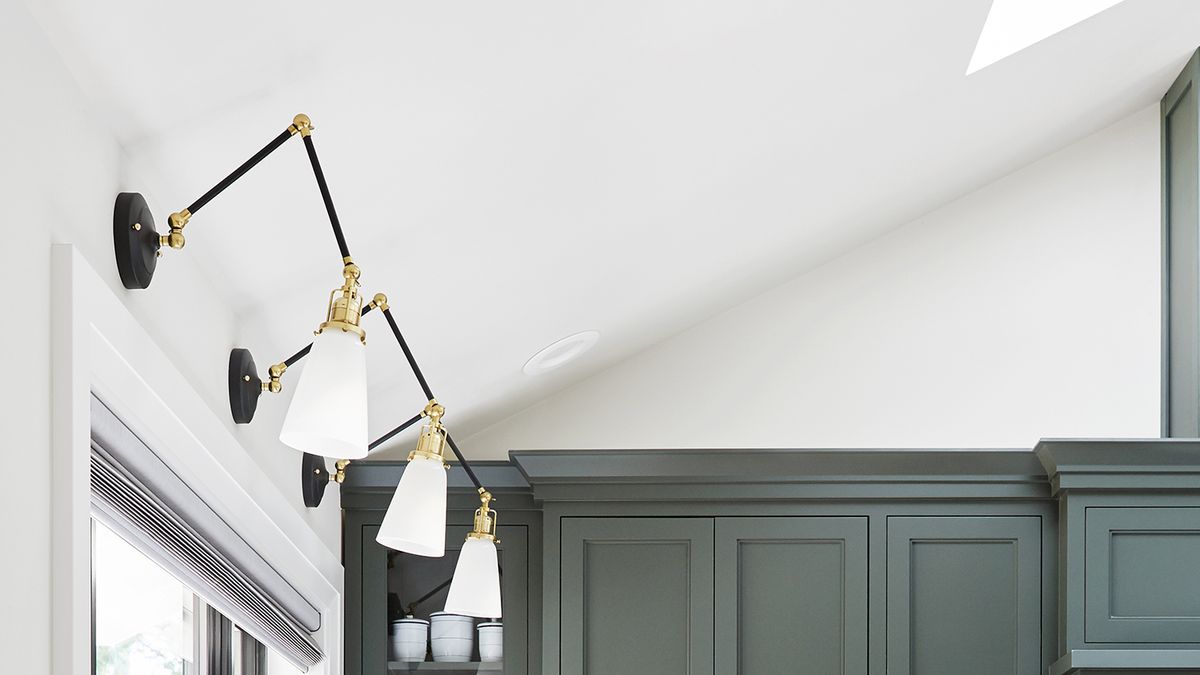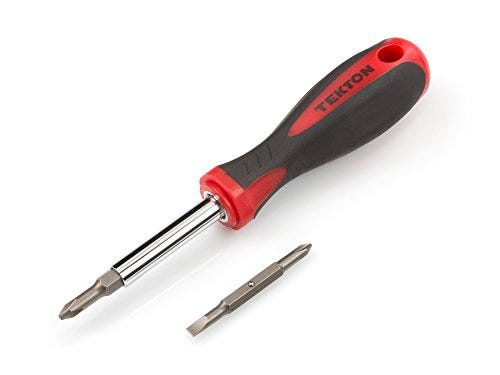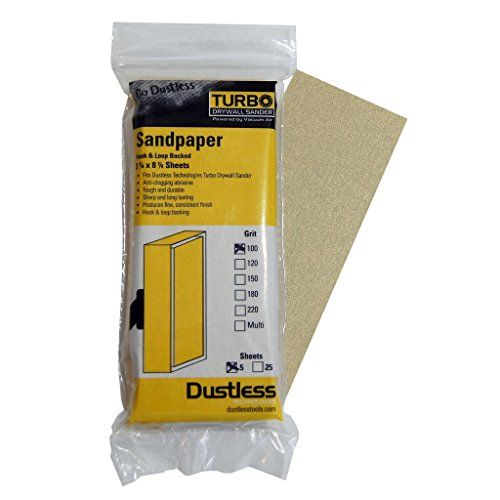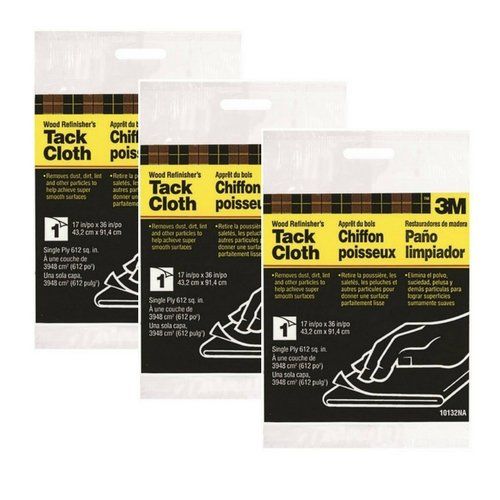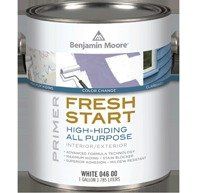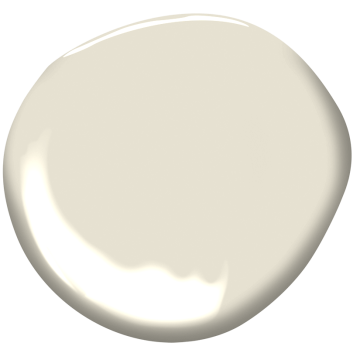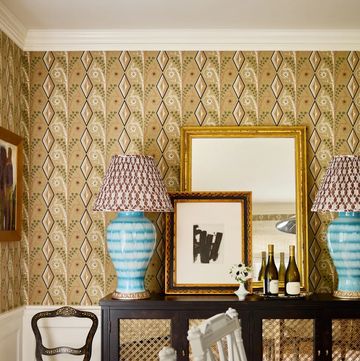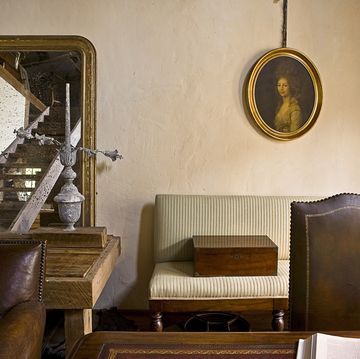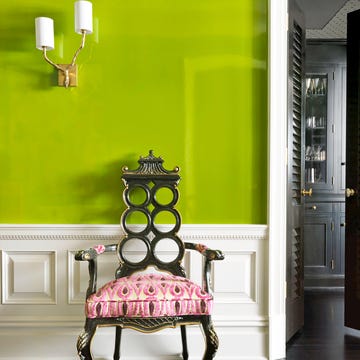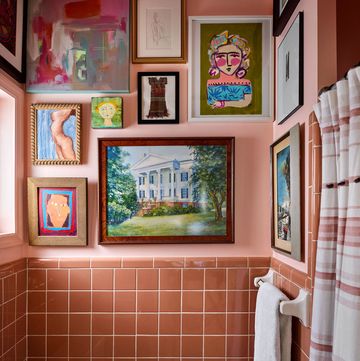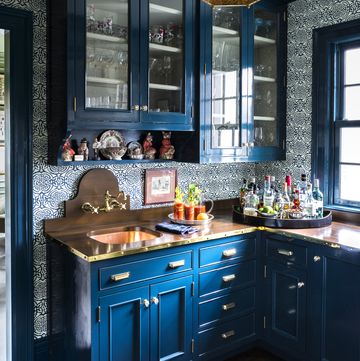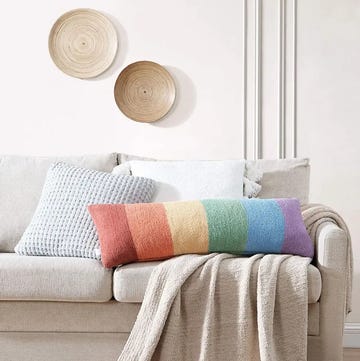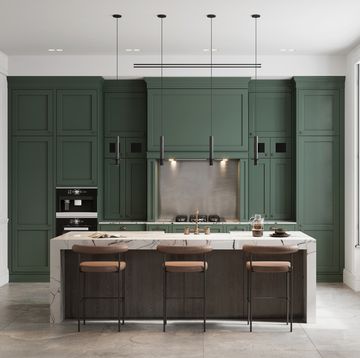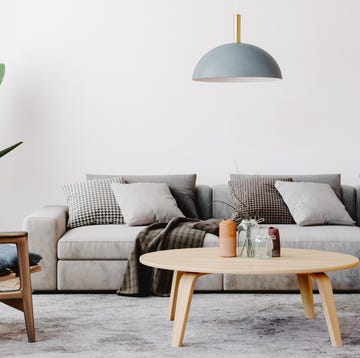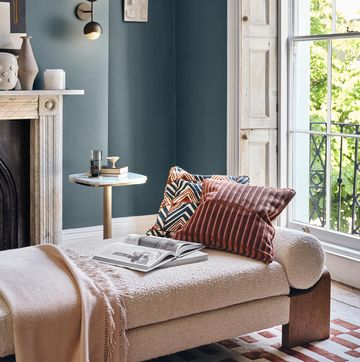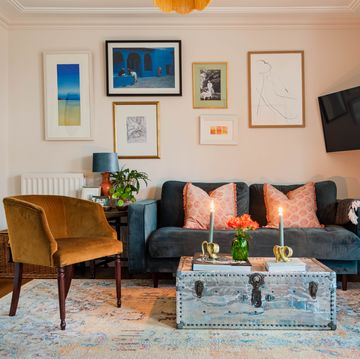A scroll through the popular #kitchensofinstagram feed on Instagram will make one thing abundantly clear: painted cabinets are in. And they’re not just white—trendier olive green and navy are also popular choices in kitchens right now. And that goes for bathrooms as well. Unfortunately, so many of us have been #notblessed with dated stained-wood cabinets, and no matter how much styling we do or other design changes we make, those wood cabinets remain a sore spot.
Completely replacing your cabinets or hiring a professional to paint them is predictably expensive, but luckily, painting your cabinets is a project you can totally do yourself, for a fraction of the cost. Before you go brush-first at your kitchen or bathroom, though, make sure you understand what you’re getting in to. Here’s everything you need to know about painting cabinets, plus some expert tips from Benjamin Moore’s pro team to guide you through those important steps you don’t want to skip.
First, Know What You'll Need To Get The Job Done:
- Screwdriver
- cleaner (a 50/50 vinegar-water solution works!)
- spackle or wood filler
- putty knife (for filling in holes with spackle)
- 100-grit sandpaper
- fine-grit sandpaper
- Tack cloth
- High-hiding all-purpose primer
- mini roller or angled brush
- enamel paint
You Won’t Do This in a Day...and Maybe Not Even a Weekend
Before you do anything, make sure you have the necessary time—and patience—to dedicate to this project. Between cleaning, sanding, priming, and finally painting (and of course drying), this is a days-long project that you don’t want to rush. Luckily, if you’re not in a hurry to have your space complete, it’s something you can work on a couple hours at a time.
Do the Proper Prep Work
Before taking your kitchen or bathroom apart, do yourself a solid and label all the removable fronts and drawers and what base cabinet they came off of so you can successfully reassemble everything after you’re done (taking reference pictures on your phone will also help). Remove all the hardware and put it in labeled bags as well. Then go ahead and take off all your cabinet doors and drawers from the boxes installed on the walls. Tape off appliances and cover the backsplash and countertop to prevent any drips from making a mess.
You’ll want to use some serious cleaning products on your cabinets, especially if they came out of your kitchen because they’re likely covered in grease and stains. Paint is only as good as the base it’s applied to, so it’s important to start as fresh as possible to ensure a long-lasting paint job.
Finally, if you run into any dents or holes you’d like to fill (if you’re planning to install new hardware, decide on it now and fill up any holes you’ll no longer be using), you’ll need spackle or wood filler to do so.
Off to a Smooth Start
Sand down your cabinets: Mike Mundwiller, field integration manager for Benjamin Moore, recommends 100-grit sandpaper to start. Keep in mind that any existing stain, paint, or varnish will take some extra elbow grease to fully remove. Only once you’re done sanding everything and ready to start priming, vacuum over the sanded areas and finish by wiping them off with a tack cloth.
Time to Prime
Once all your cabinets are sanded and wiped clean, you can apply a coat of primer. Mike recommends Benjamin Moore’s High-Hiding All Purpose Primer—it’s great at preventing stains from bleeding through and is a good choice if you’re making a significant color change. What you choose to paint with (either a mini-roller or angled brush) is up to you, but this isn’t the time to be cheap. Opting for a higher-quality tool means you won’t be fishing brush hairs out of fresh paint.
Finally, Paint
Once the primer has fully dried, run your hands over the surface. If there are any bumps or other noticeable texture, those will only be magnified with additional layers of paint on top. Go ahead and use some fine-grit sandpaper to smooth things out again. Repeat your vacuuming and wiping steps as well. And now it’s finally time to paint!
When choosing your paint, Mike suggests using an enamel paint, like Benjamin Moore’s Advance line, which dries hard and is recommended for woodwork and cabinetry. The finish is up to you but semi-gloss or gloss will make cleaning much easier. And as far as color goes, Benjamin Moore’s Color and Design Expert Andrea Magno has some brand favorites she suggests: Chantilly Lace and Ballet White for classic white and off-white options. Or if you’re going darker, she recommends Coventry Gray and Wolf Gray.
Paint all your cabinets, and then once they’re completely dry, you can go ahead and reinstall any hardware, rehang your doors, and finally put your kitchen or bathroom back together.
Follow House Beautiful on Instagram.

Maggie writes about interiors, real estate, and architecture for House Beautiful. She's always had a thing for old houses, and shares her latest crushes @HouseLusting.
